Mulch
Mulch has been used for landscapes and gardens around the world and in North America for decades. There are countless practical uses for it ranging from improving soil health to creating a stunning modern landscape design. While mulch and mulching are household terms you might be surprised by all the different varieties of organic and inorganic materials available on the market today like coco shells and glass.
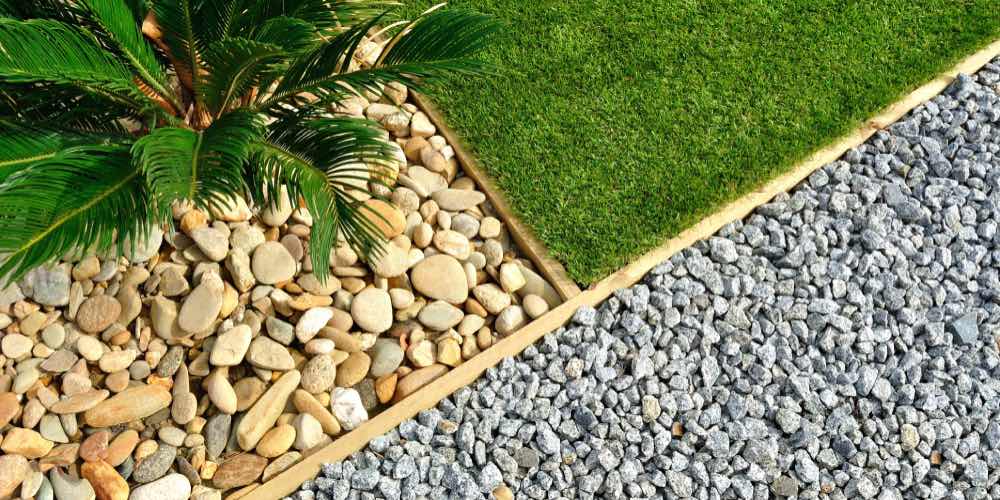
While the benefits of mulch are well documented it's important to understand the unique uses and limitations of each. An organic straw mulch is great for moisture retention and soil health but is not ideal for a permanent clean look around xeriscape plants or other large trees in a front yard landscape. Let's take a look at what a mulch is exactly, the benefits of each type followed by a comprehensive list comparing organic vs inorganic mulch.
What is Mulch?
Mulch is a layer of organic or inorganic material that's applied and spread over the surface of soil for the purpose of soil fertility, water retention, temperature regulation or weed prevention. In recent years mulching has become a great way to add colour, character and provide a clean looking landscape. It can be difficult choosing the best mulch because of the wide range of mulches available in Canada.
A permanent inorganic rock mulch looks great and will last many years but it won't regulate soil temperature nearly as effectively as an organic mulch made from hardwood or even coconut husk. When determining the best type of mulch it's important to understand the different properties of mulch and your unique requirements whether it's; xeriscaping, ornamental landscaping, vegetable gardening, a flower garden, rock garden or creating a dog run.
Types of Organic Mulch
There are two types of mulch; organic and inorganic. Organic mulches have properties that are vitally important to soil health but may be too high maintenance, unsightly and even unnecessary for some applications. Inorganic mulches and synthetic materials look great for many years and are very low maintenance but some lack in their practical ability. Let's take a look at the benefits of each type of mulch including some creative, earth-friendly and attractive mulch alternatives like shredded rubber and glass.
- Bark
- Wood chips
- Sawdust
- Pine needles
- Leaves
- Grass clippings
- Straw
- Paper
- Compost
Bark Mulch

It's common to find bark mulch being used in any city in Canada. It's both practical and aesthetically appealing and available in almost any shade of brown. Pine bark is lighter with a red tinge while an aged bark mulch will have a rich, dark appearance. You may need to rake the mulch every year to revitalize the colour and keep it looking like new because it will fade over time.
It's ideal for mulching around trees and ornamental landscapes. It can be displaced and messy if a proper edging border isn't used. At a depth of about 4" or deeper you can rely on bark mulch for weed suppression. Try to find a bark mulch native to your local ecosystem for best results or choose something unique like cypress or gorilla hair.
Wood Chip Mulch
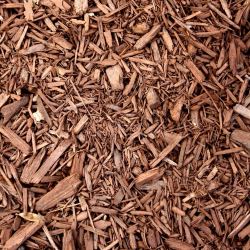
Wood chip mulch is a great option as an ornamental landscaping ground cover. If you are mulching with wood chips as part of a plan to add nutrients to a flower or vegetable garden be cautious about the type of wood you are using and expect decomposition to take a few years. There are some types of wood that will harm vegetables including the walnut tree that will kill tomatoes.
When using bark, chips and sawdust find out exactly what trees they are derived from and make sure you aren't adding anything detrimental to your garden. If you are using the mulch as an ornamental layer on top of landscape fabric you can choose based on a colour that looks great with the rest of your landscaping.
Compost Mulch

If you really want to contribute to sustaining our environment and make use of yard waste this is a great option. Compost is generally made up of organic vegetation or manure from livestock. It can be created on your own or bought from a store ready to be added to your garden or as a layer of nutrients for plants and trees. It's a very cheap way to replenish old and tired soil and give growing plants a boost.
Compost mulch is commonly used as a topping that can be mixed into existing soil that has been depleted of nutrients. It is also a great way to supplement soil around trees, bushes and plants. It may not smell the best when it's first applied but your plants will thank you when it's used as part of your annual maintenance.
Sawdust Mulch
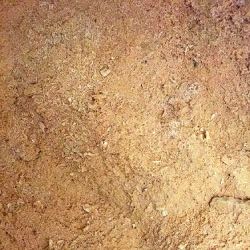
Mulching with sawdust is a great way to reuse a bi-product of processing wood. Sawdust is acidic which could be bad for some plants and vegetation but beneficial for anything that flourishes in acidic soil like tomatoes and blueberries. It's good practice to add nitrogen at a rate of 1/50 parts of nitrogen to sawdust especially if your vegetation prefers balanced soil.
Since sawdust is used solely for garden mulching you likely won't consider this for any other type of ornamental landscaping. In a garden you should aim for a 1 inch depth and not much deeper otherwise you can end up with rot, especially around the base of trees or plants that receive a lot of water.
Pine Needle Mulch
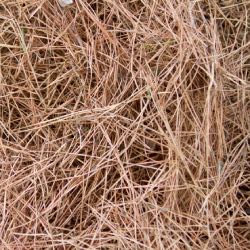
Using pine needles as mulch comes with the benefit of making use of a yard waste material and introducing nutrients to the soil. It falls into the same category as leaves and grass clippings but it's important to recognize that living pine needles will increase the acidity of the soil. This is great for some vegetables and plants but detrimental for others. If you want to avoid the heavy acidic reaction wait until the needles have dried thoroughly.
A thick layer of pine needles will regulate soil temperature while maintaining aeration which is vital for soil and plants. The appearance is not as clean as inorganic mulches but it is a great way to boost the soil quality in a garden.
Leaf Mulch

Leaf mulch is a cheap way to add nutrients to your soil and even entice worms and other beneficial critters. It's common to find leaves being used in gardens and is a great way to make use of leaf yard waste every year. Apply it to your garden in the fall and till it into the soil in the spring. While you can save money using this type of mulch it doesn't have the best appearance and isn't practical for ornamental landscaping.
It's great for gardens and you'll be helping the environment by making use of recycled yard waste. It isn't attractive and because of this it's likely limited to being used in gardens or as part of organic composting.
Grass Clipping Mulch
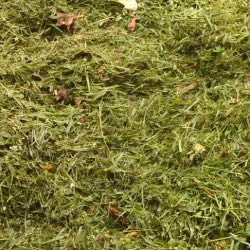
Grass clippings as mulch is another method for adding nutrients to your garden instead of burdening your local landfill. If you use grass mulch in a vegetable garden make sure there are no herbicides or pesticides used on your lawn as they will end up leeching into your vegetables. Clippings can decompose very fast and end up in a slimy heap if too much is used. We recommend shredding the clippings as much as possible before applying as a mulch layer or composing separately.
While grass clippings are great for adding nitrogen directly to your soil it's best used as part of your composting routine. If you live in a wet climate you can end up with mold especially if the grass isn't allowed to dry out before being applied.
Straw Mulch

Straw as mulch is a unique way to bring some practical benefits and even create a unique look. If it's available to you it's a great way to make use of a natural product that will suppress weeds, regulate temperature and retain moisture. It's common to see it used in large gardens or orchards due to its ease of application, affordability and benefits. While it can look clean and be a quick fix for a dirty growing area it does require reapplication every year.
Hay or straw is another great organic mulch that will help some vegetables and plants flourish. In addition, you will be attracting local and beneficial insects and other beneficial organisms.
Paper Mulch

Using paper as mulch is a creative way to recycle newspapers and even cardboard. If you are using old newspapers try to use pages with less ink and you may even want to confirm with the newspaper that they are using organic dyes, which most do. It's a great way to provide a layer that will hold moisture and prevent unwanted weeds. When used in combination with other mulches it can be a valuable layer for your overall soil and plant health.
Paper mulch is ideal for regulating soil temperature and in essence creates an insulating blanket for the soil. When used under a more attractive mulch like fabric, rock or mulch it can be very handy and your plants will appreciate it. Try newspaper sheets or shredded paper if you have access to a shredder.
Benefits of Organic Mulches
Organic mulches are excellent at preventing soil from drying out, making them ideal for xeriscaping and drought-resistant landscaping. They limit weed growth by preventing sunlight from penetrating to the soil underneath. They also help regulate the temperature of the soil which prevents overheating in the summer that could lead to increased water requirements and protects fragile roots during cold winters.
A common practical use for organic mulches is their ability to deliver nutrients to the soil as they decompose. This is ideal if the existing soil is lacking in nutrients and leads to healthier, stronger grasses, plants, tress that are more resistant to drought and pests. If you use a bark, chip or sawdust native to your region you will likely enjoy the benefit of pest protection including repelling unwanted bugs like ticks and fleas.
Types of Inorganic Mulch
- Pebble
- Stone
- River rock
- Lava rock
- Fabric
Pebble
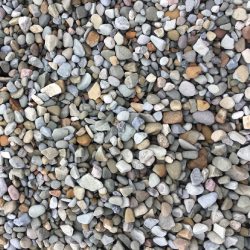
Pebble mulch is a very common landscape material partly because it looks great but it's also affordable, easy to manipulate, durable and will hold it's colour indefinitely. It won't decompose like organic mulch covers will and effectively reduces weed growth especially when combined with landscape fabric. Pebble or pea gravel usually comes in light pastel colours or multi-coloured in the case of a small river rock.
The smooth shape and attractive appearance make it ideal for almost any application whether it's a walking path, plant accent or children's playground. To prevent the pebbles from being displaced use a strong border like bender board, wood or concrete edging.
Stone

Using inorganic stone as a mulch layer is our favourite method of landscape mulching for a number of reasons. Stone and rock are very low maintenance and will literally last forever without fading. The initial cost might be higher than an organic mulch but it's offset by the long lifetime of rocks.
You can count on weed being held at bay especially when used in combination with a landscape fabric. Stone mulches are wind-resistant, prevent erosion and even fire-resistant which is an added benefit for residents of Kelowna and the interior of British Columbia. Find landscaping rocks in a range of colours including beige and charcoal grey.
River Rock
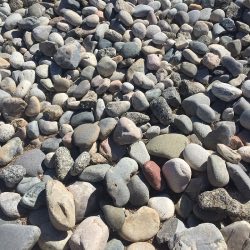
River rock is a great choice as a mulch because it combines all the benefits of inorganic mulches with an attractive appearance. The multi-coloured smooth rocks create a natural looking accent to almost any landscape design reminiscent of a lake shore. Since landscape rock is often light coloured it has cooling properties that can be very beneficial in hot and dry climates. You can also count on weed suppression and moisture retention when used with a permeable landscape fabric.
Just like other rock ground covers you will have the added piece of mind knowing you are creating a fire-preventive layer. In areas that are at risk of forest fires it's worth considering using a rock mulch landscape around your home.
Lava Rock
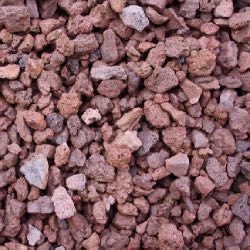
Lava rock is one of the best overall mulches on the market today. It looks great as a landscape ground cover, stands up to children and pets with the added benefit of being lightweight and easy to use. It doesn't retain moisture like most other mulches which can be ideal if too much water is a concern. The composition of lava rock lends itself to aeration that helps prevent mulch mold, fungus and even repels some insects.
It's ideal for an area that requires increased air movement and tends to get too wet. It can heat up significantly in the hot summer months but heats up less than dark coloured rock or pebbles. It's commonly available in reddish colours but can be found in other shades including black and beige.
Fabric

Landscape fabric is a must have for some landscapes for its ability to prevent weed growth and provide a clean layer between soil and inorganic rock mulches. A commercial grade fabric is essential if you are using it for weed prevention because it will last for several years. There is nothing worse than weeds growing up through pebble or bark mulch and fabric solves that when installed properly.
A quality landscape fabric prevents weeds yet still allows water to permeate through to plant roots. Start with a nutrient rich soil including compost, a layer of weed barrier fabric and your choice of inorganic rock on top. A landscape that incorporates artificial grass with fabric and rock is incredibly low maintenance and looks amazing!
Benefits of Inorganic Mulches
An inorganic mulch includes stones, rocks and pebbles as well as synthetic materials like rubber, plastic and even glass. The biggest benefit of inorganic mulch is the durability and hard-wearing properties that make them very low maintenance while still looking great. You can take pride in knowing that you are also helping the environment by choosing an environmentally friendly option.
If you are landscaping a residential front yard you will be pleasantly surprised with the numerous colours available in bark, rock and landscaping glass. Inorganic mulch used in Kelowna and the Okanagan valley should be light coloured and used with drought-resistant, xeric plants. An added benefit is they will resist erosion and create a fire barrier.
Mulch Alternatives
- Coconut coir
- Cocoa bean
- Sugar cane
- Seaweed
- Shell
- Glass
- Rubber crumbs
- Silver plastic
Coconut Coir Mulch

A quality coconut coir mulch is an environmentally friendly option loaded with benefits that make it worth serious consideration. The coconut coir fibre is the outer husk that is separated from the coconut flesh during the food preparation process. The uses for this renewable product include doormats, brushes and mulch.
Coir husk from coconuts hold more water that almost any other mulch and that means you can count on much less water required to keep plants hydrated. It's high in carbon which makes it ideal for balancing acidic soil or creating a compost with neutral properties. We highly recommend this mulch as a soil enhancer for residents of Kelowna for small to medium sized gardens.
Cocoa Bean Mulch

Cocoa bean hulls or shells used as mulch are a great way to recycle a bi-product of the cocoa production process. They smell great and the process of roasting them to separate the hull from the bean leaves them sterile in addition to being light weight. Organic cocoa mulch will add beneficial nitrogen, phosphate and potash to the soil as it decomposes and create a protective blanket that even keeps cats out of the garden.
Cocoa mulch is potentially toxic for dogs. The shells contain residual caffeine and theobromine that is potentially harmful if ingested by dogs. The sweet smell can even attract dogs, enticing them to try the new addition to the garden or landscaping. Avoid cocoa bean mulch if you have dogs or if your yard is accessible to other neighbourhood dogs.
Sugar Cane Mulch

Organic sugar cane mulch is made from the dried leaves and tops of the sweet plant. It's sold in dried cubes that have been screened, cleaned and dehydrated for efficient shipping. It will provide nutrients to soil as well as the other moisture retention and insulation benefits of other organic mulches. While sugar cane as a mulching agent is a great idea it may not be cost effective for residents of Canada.
If you decide to give this product a try be sure to look for 100% certified organic sugar cane mulch from a reputable supplier. You won't be disappointed in this option especially if you are encouraging an increase in soil organisms including earthworms.
Seaweed Mulch

Seaweed mulch is an alternative that might not be for everyone but it has a lot of great benefits. Using weed from the sea or a lake might seem like a crazy idea but it does do some amazing things to soil including enriching it with a ton of micro nutrients, plant growth hormones and is great for retaining moisture. The best part is that it's free if you find somewhere to harvest it yourself.
It's best to be applied to your garden within 24 hours before it dries out. It can also be mixed with other mulches or in a compost. Contrary to the name, they are great for preventing weeds and won't come with hidden weed seeds that some contaminated bark mulches can have.
Shell Mulch
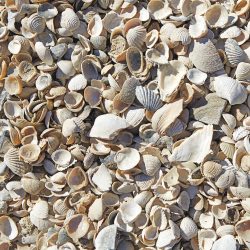
Sea shells are a unique alternative to traditional mulches. While they are considered organic they do take some time to decay where they will actually add alkaline calcium and other nutrients to the soil. They provide the the same water retention and cooling benefits as other mulches especially if the shells are white in colour. If you harvest the shells you should clean them before creating your 1 to 2 inch mulch layer.
If you combine sea shells with landscape fabric you can count on no weeds, a unique appearance that is great for contrasting artificial grass or a stone pathway. Use a border to prevent spillage outside the area mulched with shells.
Glass

Glass mulch is a new and fantastic trend that's gaining ground because of the many benefits including the variety of colours available. Glass used as a ground cover on top of landscaping fabric helps keep glass out of landfills and gives it a practical use. The glass is tumbled and and processed so there are no sharp edges and available in almost any colour so you can be as creative as you want with your landscape design.
Mulching with glass can be very budget friendly if you obtain recycled glass from your local landfill or recycling facility. If you want to experiment with different colours you can find an array of glass mulch colours online including black landscape glass.
Rubber Crumbs

The controversy surrounding rubber crumb mulch makes it tough to choose this material for any landscape or garden application. If you care about the environment or potentially releasing toxic chemicals into the soil you should steer away from rubber as a landscape cover. It's a great idea because it makes use of recycled tires and lasts for many years but it's a debatable product that needs further investigating before we can recommend it.
It's potentially toxic, extremely flammable and proven to harm local wildlife including fish and their habitat. It was originally used for playgrounds and sports fields but that trend seems to be reversing based on recent studies.
Silver Plastic

Silver plastic mulch is a thin film similar to a thin garbage bag but comes in sizes able to cover large areas. It has the same effect as black plastic with the added benefit of being able to reflect light. This helps keeps the soil cool and redirects beneficial light up into the low undersides of vegetation which increases growth and overall plant health. An additional benefit to the silver reflective plastic is it repels potentially disease carrying insects.
A silver plastic layer will thwart weed growth and decrease water evaporation. It's easy to install and relatively inexpensive because it will last for a few years. This type of mulch layer can be very advantageous for vegetables and plants but likely not applicable to residential landscapes.
Organic Mulch vs Inorganic Mulch
If you still want more clarification on the advantages and disadvantages of organic and inorganic mulch we've put together a list of pros and cons. While we try to be as thorough as possible there are variables we just can't account for so please use your own judgement before making a decision on the best mulch for your yard or garden. If you still have questions about mulch be sure to read our mulch FAQ's below.
Organic Mulch Pros and Cons
Pros
- Temperature regulation. Keeps plants warm in the winter and cool in the summer.
- Plant health. Plants will be healthier, bigger and stronger including resilient to drought and disease.
- Less watering. You will need to water a lot less due to the decreased evaporation.
- Added nutrients. Adds valuable nutrients to the soil during natural decomposition.
- Cost. Often you can recycle garden waste that's free.
- Xeriscaping. It's ideal for xeriscaping plants and smart gardening.
Cons
- High maintenance. It can be a lot of work keeping up with a mulching routine every year.
- Weeds. It's difficult to completely prevent weeds but it is possible.
- Contaminants. It's inevitable you will be introducing seeds or other contaminants.
- Flammable. If fire is a potential hazard in your neighbourhood it can pose a risk.
- Mold. If you live in a wet climate you can develop mold and even retain too much water.
Inorganic Mulch Pros and Cons
Pros
- Longevity. Long lasting and colours won't fade over time.
- Low maintenance. After it's in place you can count on it lasting a lifetime.
- Attractive. They look great and are available in just about any colour.
- Prevent erosion. Extremely resistant to wind and water erosion.
- Weed suppression. Virtually no weeds especially if combined with a landscaping fabric.
- Fire resistant. Extremely important if your residence borders an area prone to wildfires.
Cons
- Initial cost. The upfront cost is potentially high but costs will be recuperated over time.
- Heat absorption. Any dark coloured rock, glass or rubber will absorb a lot of heat in the summer months.
- No nutrients. You won't be adding any beneficial nutrients to the soil.
Mulch FAQ's
What is the best mulch for weed control?
The best mulch for weed control is an inorganic rock, stone or glass with a commercial weed barrier fabric underneath. It will provide weed suppression for many years as long as the fabric is protected by an adequate layer of material. Organic mulches are effective at preventing weeds if the layer is deep enough.
How do you mulch around trees?
Mulching around trees involves removing any existing material from around the base of the tree including any up-shooting roots. You then want to add an organic mulch at a diameter of about 3-4 foot and depth of about 2-3 inches around the base of the tree. Learn more about mulching around a tree including a handy mulch calculator.
Which mulch is best for dog owners?
If you own a dog it's important to do your research. You should avoid cocoa shell mulch because it can actually be very harmful to dogs if they ingest it. We recommend an inorganic rock mulch for anyone with pets because it's hard-wearing, clean and it creates a visually pleasing look.
How should I mulch around a pool?
If you are mulching around a pool you don't want any debris ending up in your pool. This would rule out anything that can get easily displaced by pets or children including small rocks and pebbles. Mulch debris that ends up in the pool wreak havoc on the liner, filter and vacuum system. If you use an organic mulch make sure it's contained somehow but we recommend using a stone, lava rock or something similar around pools.
What is the best landscaping mulch?
We feel the best landscaping mulch for Kelowna and Okanagan is a stone or rock that is light in colour over a layer of fabric. You will get all the benefits of an inorganic mulch without a lot of heat retention. If you are looking for an organic mulch we recommend using a bark that isn't highly acidic.
How deep should mulch be?
The ideal depth of mulch depends on the type you are using and the goal. An inorganic landscaping rock mulch just needs to be deep enough to protect and cover the fabric underneath. An organic mulch will range anywhere from 1 to 8 inches depending on the material. A sawdust mulch should be shallow and a straw mulch can be effective at suppressing weeds at deeper depths.
Disclaimer
Please use all appropriate and proper safety precautions when attempting projects on this website. All projects are attempted at the reader's own risk.
Duralawn® participates in the Amazon Services LLC Associates Program, as an Amazon Associate we may earn a commission from qualifying purchases.
Duralawn® artificial grass installations, products and service in Kelowna, Vernon, Penticton, etc since 2018.
